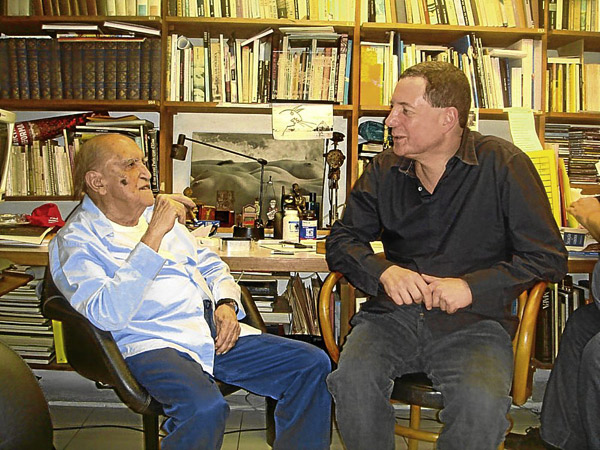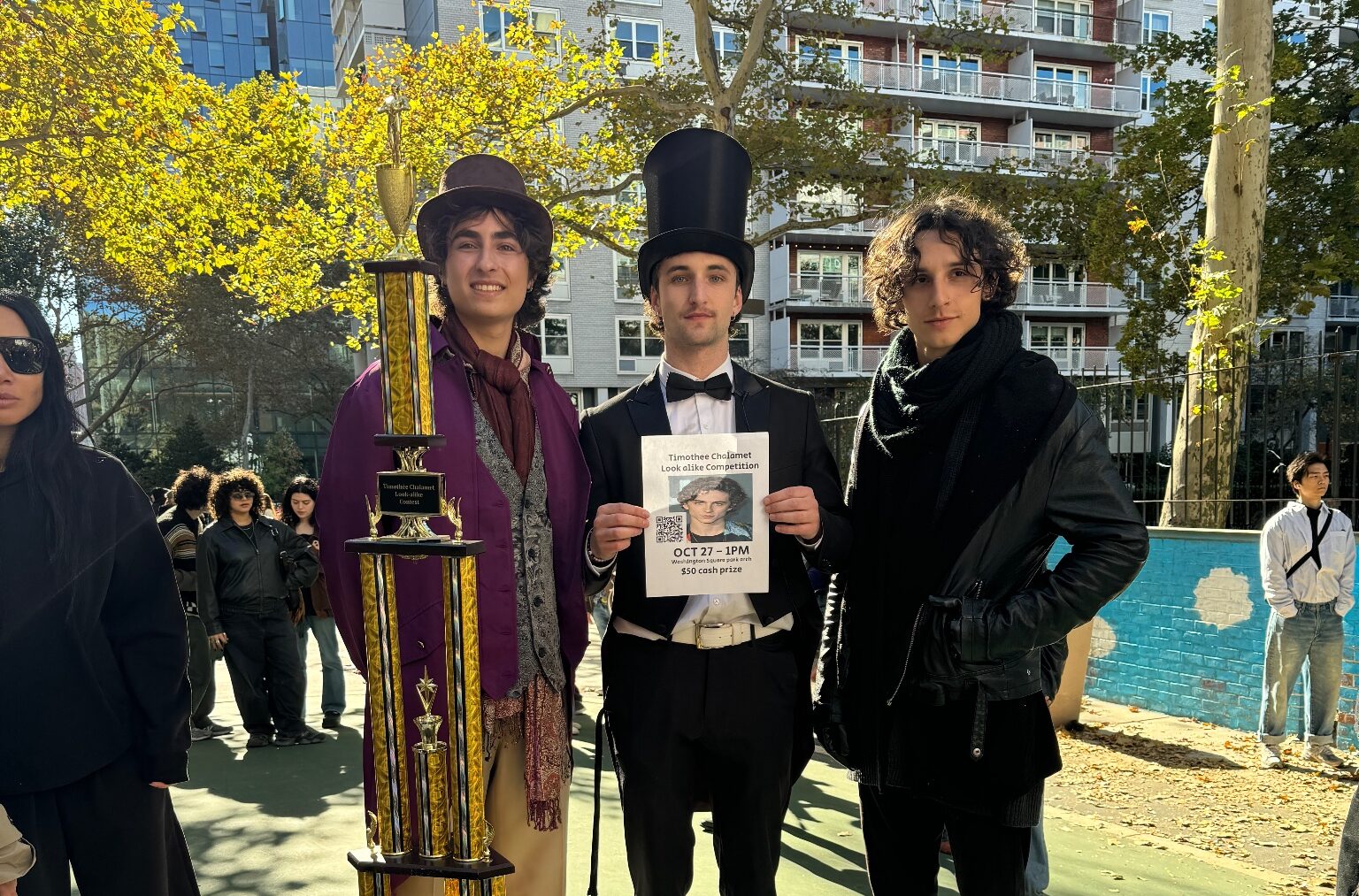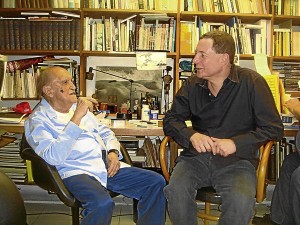
Oscar Niemeyer, 103, is Brazil’s most famous architect. Considered one of the most influential names in international modern architecture, he is responsible for the project of Brasilia, the country’s capital constructed in the late 50’s, and many other iconic buildings including ONU’s headquarters in New York, a collaboration with French master Le Corbusier.
Curves have been his passion over the course of a lifetime. They define the architect’s own style: the lightness of the curved forms that create spaces full of harmony, grace and elegance.
“It’s not the right angle that attracts me, nor is the straight line, hard, inflexible, created by man. What attracts me is the free and sensual curve, the curve I find in my country’s mountains, in the sinuous course of its rivers, in the ocean waves, in a woman’s body. The whole universe is made of curves, the curved universe of Einstein.” These lines are part of his work Poema da Curva (The Curve Poem).
The architect never tires of repeating that “architecture is of no interest, what is of interest is life.” And it is from the elements of his life that his genial architecture emerges, particularly the exuberant landscapes of his birthplace, Rio de Janeiro. As the Swiss-French architect Le Corbusier once observed, Niemeyer appears to have the mountains of that marvelous city in his eyes. The natural beauty of Sugarloaf Mountain and Guanabara Bay (two of Rio’s famous landscapes), the intriguing forms of the clouds or the waves of the sea lend their sinuous contours to surprising buildings of concrete.
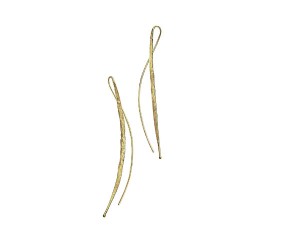
The H.Stern by Oscar Niemeyer Collection is the initiative of Roberto Stern, president and creative director of H.Stern, who has always given special emphasis to organic and sinuous forms in jewelry.
“We do not find straight lines in nature, therefore I like asymmetry and irregular contours, which are more human and natural,” said Stern. It was this shared passion with the architect that led Stern to launch the collection.
For the first time, Niemeyer personally approved a collection of jewelry created in his honor, and based on his own sketches, his curved lines. Several of the designs include pieces inspired by the female form.
“The jewels are extremely pretty and very light. It’s incredible how they have managed to exactly replicate my designs,” the architect said. “The people who made these jewels are very talented!”
The jewelry designers sought inspiration not in the final form of Niemeyer’s revered creations, already widespread, but in their primary element: the apparently unpretentious outlines and contours which are transformed into architectural works like those in Brasília; Pampulha, an architectural project in Minas Gerais state; the Copan building, in São Paulo; and the surprising Museum of Contemporary Art in Niterói, considered one of his finest works.
Niemeyer appears to bend straight lines in his concrete structures, transforming curves into a natural solution for his creations. H.Stern does the same with gold and diamonds. Besides the curving contours, empty spaces—so prized by the architect in his concrete sculptures—are also reflected in the jewelry. Rings, bracelets and earrings emphasize simple lines, interspersed with empty spaces.
The H.Stern Collection by Oscar Niemeyer includes jewelry in gold and diamonds, composed of six different lines and named for some of his works and famous projects. They convey the simplicity of the outlines, which are captured in a few, essential lines: loose, free and flowing.
Below are the six lines that make up the collection:
Brasília—The architecture of the city of Brasilia, glimpsed in the sketches submitted by Lucio Costa for the international design contest for the new capital of Brazil, was the result of Oscar Niemeyer’s definitive influence. The concave and convex domes of the National Congress and the columns of the Alvorada and Planalto Palaces and the Supreme Court are highly original features. Combining these with the spectacular forms of the columns of the Cathedral and the palaces of Itamaraty and Justica, Niemeyer succeeded in closing the rectangular and symmetrical perspective formed by the repetition of the Esplanada and Ministry buildings.
The concave and convex domes that epitomize the building of the National Congress gave form to an yellow gold bracelet, in which continuous lines and empty spaces encircle the female wrist in a light, sensual way. The jewel reconstructs Niemeyer’s proposal when he planned, in 1958, what was to become one of the most beautiful scenes of the federal capital and one of his 35 works to be listed by the Historical Heritage of the country. Besides the bracelet, there are also earrings in which opposite curves join at the tips, with singular lightness.

Pampulha—The inspiration for this line comes from the sinuous design of the roof of the São Francisco de Assis church in Pampulha, state of Minas Gerais, Brazil. The project was created by Niemeyer in the 1940s, at the request of Juscelino Kubitschek, then mayor of the city who would later become President of Brazil. The structure was highly controversial due to its bold forms. Niemeyer said, “I covered it with curves, all kinds of curves, as a statement against the architecture characterized by straight lines that predominated up until then.”
The wavy design of this emblematic work was reproduced by H.Stern in rings, earrings and bracelets in white gold and diamonds.
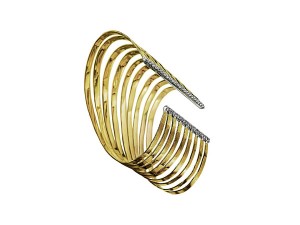
Copan—One of the icons of the famous concrete poetry of the capital São Paulo, the Copan building has hovered like a wave on the horizon of the metropolis since the 1950s, contrasting with the straight angles that predominate in the local architecture. It was the wavy, striking design that was the inspiration behind the Copan jewelry collection, with rings in wavy forms and a voluminous yellow gold bracelet.
Sketch—Amid the iconic designs of the Pampulha and the National Congress of Brasília, the wall of Niemeyer’s office displays an intriguing design. Two curved, perpendicular lines appear to form the sketch for one of the consistently bold columns of his buildings. Who has seen the arched columns of the Cathedral of Brasília or the Palácio do Planalto? Or, perhaps, the profile of one of the dish-like domes which he transforms into functional buildings. Or it may be an unpretentious drawing that has not been transformed into works of concrete.
This sketch of extreme simplicity was interpreted by H.Stern in a pair of earrings—in white gold and diamonds—in which the metal line folds between the frontal part and behind the earlobe.
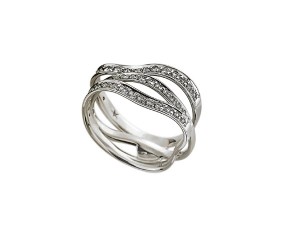
Curves—“If the straight line is the shortest route between two points, the curve is what makes concrete search for the infinite,” said Niemeyer, explaining his preference for fluid, sinuous lines. Curves baptize this line of jewelry with rings and earrings. In the earrings, the strands form wavy layers, one on top of the other. The design explores one of the principle elements of architecture: perspective. The visual impression given differs depending from which the jewelry is viewed.
Flower—Niemeyer’s work also includes sketches of singular beauty, like one of a hand holding a flower with four leaves. A single line of form and image, reminiscent of a child’s drawings in its simplicity. This drawing provided the inspiration for pendants and bracelet in yellow gold which represent the flower, closely following the spontaneous vision of the architect and designer.
The gold flowers are hollow, in reference to Niemeyer’s appreciation for unfilled areas. “Architecture is about overcoming spaces… I cannot understand those who are afraid of open spaces. Space is part of architecture.” It is also part of the jewelry.
Brazilian musicians Carlinhos Brown and George Israel have also composed a song to honor the launch of the H.Stern by Oscar Niemeyer Collection. “Linhameyer” (a blending of Niemeyer’s name with the word Linha—“line” in Portuguese) speaks of the sinuous lines in the architect’s drawings.
“Linhemeyer” is the soundtrack for a video on the collaboration, available on H.Stern’s Youtube channel (www.youtube.com/ HSternJewelers).

